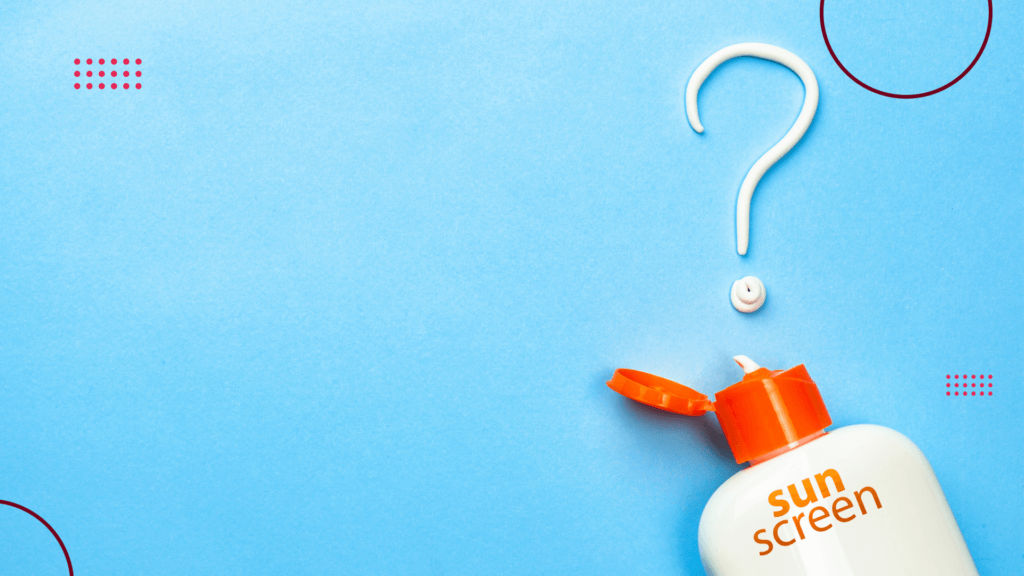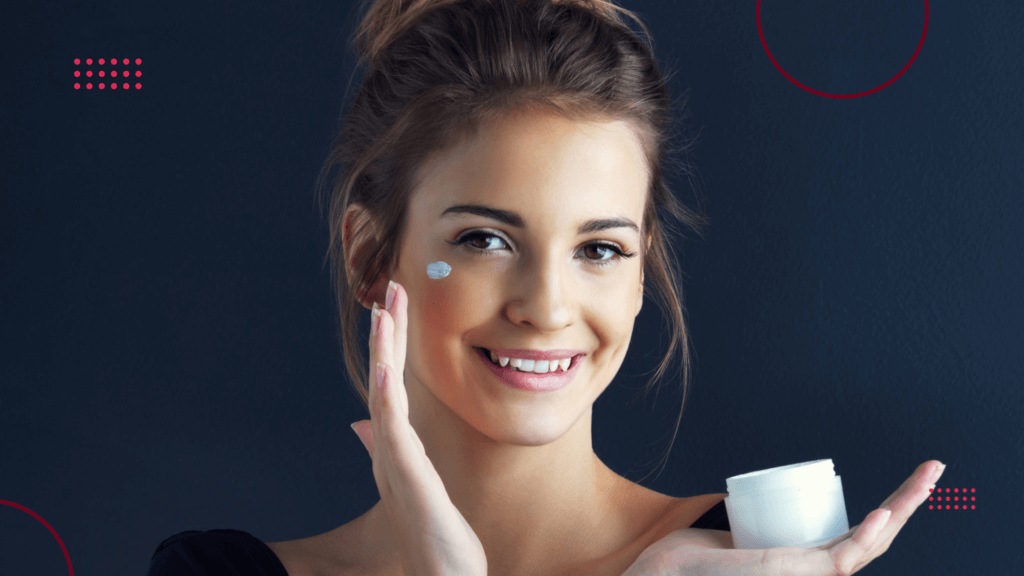SPF (Sun Protection Factor) has been a cornerstone of skincare for decades. Initially it was introduced in the early 20th century as a response to the growing awareness of the harmful effects of UV radiation.
The first commercial sunscreen was developed in the 1930s. Since then, the science behind SPF has evolved significantly, shaping the modern understanding of skin protection. By the 1970s, SPF ratings became a standardised measure. That helped consumers understand the level of sun protection offered by various products.
What began as a simple solution for preventing sunburn has now, however, transformed into a multi-faceted skincare essential. And a giant industry.
As science and skincare trends continue to evolve, the role of SPF has expanded far beyond sun protection. It now has a critical role in anti-ageing and it has been integrated into sustainable, eco-conscious and multifunctional formulations. SPF is redefining its place in modern beauty routines today.
So many dimensions of SPF in contemporary skincare to explore. So many things to know about its science, anti-aging benefits, innovative formulations, daily applications and the promising future of sun protection.
The Science Of SPF
What SPF Really Means
SPF measures how effectively a sunscreen protects the skin against UVB rays. These rays cause sunburn and direct damage to the DNA in skin cells. For instance, an SPF 30 sunscreen theoretically allows only 1/30th of UVB rays to reach the skin, blocking approximately 97%. However, it’s important to note that SPF does not directly measure protection against UVA rays. They penetrate deeper into the skin and contribute to ageing and long-term damage. Broad-spectrum sunscreens are essential as they shield against both UVA and UVB rays, offering comprehensive protection.
| SPF | % of UVB Rays Blocked | % of UVB Rays that Penetrate Skin |
|---|---|---|
| 15 | 93% | 7% |
| 30 | 97% | 3% |
| 50 | 98% | 2% |
| 100 | 99% | 1% |
Mechanism Of Action
SPF products contain active ingredients that either absorb, scatter, or reflect UV radiation. Mineral sunscreens using ingredients like zinc oxide and titanium dioxide, act as physical barriers. They help in reflecting harmful rays away from the skin. Chemical sunscreens, on the other hand, use compounds like avobenzone and octisalate to absorb UV rays and convert them into harmless heat. Each type has unique properties, making it possible to cater to various skin types.
Key Aspects Of UVA Rays
| Feature | Description | Effects on Skin |
|---|---|---|
| Wavelength | Longer wavelengths (320-400 nm) | Penetrates deeper into the skin than UVB rays |
| Penetration Depth | Reaches the dermis (the deeper layer of skin) | Can damage collagen and elastin fibers |
| Intensity | Relatively constant intensity throughout the day and year | Present even on cloudy days |
| Contribution to Sunburn | Contributes less directly to sunburn than UVB | Can enhance the effects of UVB and contribute to redness |
| Primary Effects | Skin ageing (photoageing), wrinkling, age spots, some skin cancers | Causes premature ageing, wrinkles, sagging skin and age spots (hyperpigmentation) |
| Indirect DNA Damage | Primarily causes damage through the generation of reactive oxygen species (ROS) | Leads to oxidative stress, which can indirectly damage DNA and contribute to skin cancer development |
| Tanning | Causes immediate tanning (pigment darkening) that fades quickly | Triggers melanin production, but the tan is less long-lasting compared to UVB-induced tan |
| Window and Glass Penetration | Can penetrate window glass | Exposure while driving or sitting near windows can contribute to cumulative UVA exposure |
| Protection | Broad-spectrum sunscreens are essential for protection | Look for “broad spectrum” on sunscreen labels, indicating protection against both UVA and UVB |
| Other Health Concerns | May play a role in the development of cataracts and some eye diseases | Protect your eyes with sunglasses that block UVA and UVB rays |
Key Learning Points
- Even a relatively low SPF blocks a high percentage of UVB rays.
- The increase in protection becomes less significant as the SPF number gets higher. For example, SPF 50 only blocks 1% more UVB rays than SPF 30.
- There is no corresponding measurement for UVA protection
The Anti-Ageing Connection

Collagen, the structural protein that keeps skin firm and youthful, is highly vulnerable to UV damage. Unprotected sun exposure accelerates collagen breakdown. This is leading to wrinkles, sagging and loss of elasticity. Daily SPF use helps shield collagen from UV-induced degradation, preserving skin’s firmness and slowing visible signs of ageing.
Sun exposure is a major cause of hyperpigmentation, including dark spots, melasma and uneven skin tone. SPF serves as a powerful preventive measure, reducing the skin’s exposure to UV rays that stimulate excess melanin production. For individuals prone to pigmentation issues, consistent sunscreen application is a non-negotiable step in achieving and maintaining an even complexion.
Sustainability has become a driving force in the skincare industry and sunscreens are no exception. Traditional chemical filters like oxybenzone and octinoxate have been found to harm coral reefs, leading to bans in various regions, including Hawaii. Reef-safe formulations that omit these ingredients are gaining popularity, offering effective protection while minimising environmental impact.
Both mineral and chemical sunscreens have their merits. Mineral sunscreens are often favoured for their broad-spectrum protection, immediate efficacy and suitability for sensitive skin. However, they can leave a white cast, making them less appealing for darker skin tones. Chemical sunscreens are lightweight, invisible on the skin and easier to incorporate into daily routines. Some people are concerned about potential irritation or hormonal effects. The choice often depends on individual skin needs and preferences.
Gone are the days when SPF was reserved for beach days or holidays. Dermatologists recommend daily use, rain or shine, to combat incidental UV exposure from activities like driving or walking outdoors. SPF should be applied as the final step of a morning skincare routine and reapplied every two hours for optimal protection.
Simplifying skincare routines is a growing trend and SPF is increasingly being incorporated into combination products like moisturisers, serums and even makeup. These hybrid formulations make it easier for individuals to protect their skin without adding extra steps to their regimen. However, it’s important to ensure the SPF level in such products is sufficient for adequate protection.
The Future Of SPF

Emerging technologies are revolutionising how sunscreens work. Encapsulated SPF, for instance, offers the promise of longer-lasting protection by using microencapsulation to release active ingredients slowly over time. Other innovations include SPF-infused fabrics and DNA-repairing sunscreens. They not only block UV rays but also help repair the damage they cause.
As consumer demand for transparency grows, regulatory bodies are increasing scrutiny of SPF claims and ingredient safety. Labels like “broad-spectrum” and water-resistance are now standardised in many countries, ensuring consumers can make informed choices. Public awareness campaigns continue to educate people on the importance of SPF. Particularly in preventing skin cancer, which remains one of the most common cancers worldwide.
| Country | Key Strengths | Notable Companies/Factors |
|---|---|---|
| United States | Largest market revenue, strong research output, home to many major brands | Johnson & Johnson, Procter & Gamble, Estée Lauder Companies, significant FDA regulation |
| China | Second largest market revenue, growing manufacturing capabilities | Increasing domestic brands, significant export market |
| South Korea | Strong focus on innovative skincare and sun protection technology | Known for “K-beauty” trends, development of lightweight and high SPF formulas |
| Europe (Various Countries) | Strong regulatory framework, home to established European brands | L’Oréal (France), Unilever (UK/Netherlands), Beiersdorf (Germany), focus on high-quality ingredients |
| Australia | High awareness of sun protection due to high UV exposure, stringent testing standards | Cancer Council Australia (influential in setting standards), development of high SPF products |
| Japan | Focus on advanced skincare technology and textures | Shiseido, Kao Corporation, known for lightweight and cosmetically elegant sunscreens |
SPF is no longer just about shielding your skin from sunburn. It has become a multi-dimensional tool in skincare, protecting against ageing and hyperpigmentation. With innovations in formulation and application, SPF is more versatile and accessible than ever. As the cornerstone of any skincare routine, its evolving role reflects a deeper understanding of skin health. It is empowering individuals to safeguard the future of their skin with confidence.
In fact, recent statistics highlight its importance. Daily use of SPF 30 or higher can reduce the risk of developing melanoma by 50%. Additionally, studies have shown that consistent sunscreen use can decrease signs of skin ageing by 24%, as measured by wrinkle depth and texture changes. Despite these benefits, only 18% of men and 42% of women report using SPF regularly, underscoring a critical gap in skincare habits. With UV radiation contributing to approximately 80% of visible skin ageing, incorporating SPF into daily routines remains a powerful and essential strategy for long-term skin health. Get started today.


